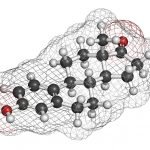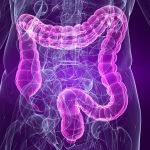Disease, Health and the Human Microbiome
JUDY FULOP, ND, MS, FABNO
According to the Toxin Philosophy, every so-called disease is a crisis of Toxemia; which means that toxin has accumulated in the blood above the toleration-point, and the crisis, the so-called disease—call it cold, “flu,” pneumonia, headache, or typhoid fever—is a vicarious elimination. Nature is endeavoring to rid the body of toxin. Any treatment that obstructs this effort at elimination baffles nature in her effort at self-curing.
(Tilden, 1926, Toxemia Explained)
A Historical View of Auto-Intoxication
To address the cause of disease, Tilden advised daily enemas and a stomach wash (if needed), along with rest, warmth, fresh air, and quiet. Disease and auto-intoxication were discussed as far back as Greek history. Herodotus reported that the ancient Egyptians used enemas 3 days a month on the lunar cycle because they were convinced that diseases have their origin in the foods we eat.
During the 1900s, much was written by scientists and physicians regarding ways in which the contents of the colon (especially undesirable residents of the colon) could contribute to melancholia, fatigue and even neurosis. The terms, autointoxication, intestinal stasis, and intestinal toxemia were used interchangeably. Going back to the 1860s, a German physician named Hermann Senator noted that systemic diseases caused mental health disorders and were rooted in intestinal “self-infective” processes. In 1887, French physician Charles Bouchart published Lectures on Autointoxication in Disease, bringing forth international recognition to the term “autointoxication,” stating that the colon was a “receptacle and laboratory of poisons, the clinical breakdown of products of bacterial action on food material that could be absorbed systemically and if not handled properly would manifest as increased susceptibility to disease over time.” In 1898 a Chicago physician, Daniel Brower, suggested that lack of stomach acid may play a role in promoting microbial growth in the intestines and thus produce a higher amount of toxic products.
As with all concepts, the pendulum swung away from the concept of disease and autointoxication, due in part to New Jersey physician Henry Cotton, who believed that all focal infections led to behavioral disorders and psychosis. At his state-run mental institution thousands of teeth were extracted and hundreds of colectomy operations were performed with his claim of a 80% remission rate (and a 30% mortality rate). Because of this, autointoxication became synonymous with the terms “charlatan” and “quackery.” While the concept of toxic buildup in the body and disease was lost to allopathic medicine, it was not lost to naturopathic medicine.
Emergence of Probiotics
Today the connection of the gastrointestinal tract with systemic disease is becoming better understood, with naturopathic physicians continuing to place a high priority on removing the cause via gut health, food intolerances, and probiotics. With the recognition in the 1960s that antibiotics and L. acidophilus effectively reduced the systemic ammonia load in hepatic encephalopathy, probiotics took on new interest. While pre- and probiotics emerged as a promising field, the technology of the time provided limited approaches for bacterial supplementation. Lactobacillus and Bifidobacterium, became predominant with the ability to be cultured, grown in labs, and sold to the public. As different microbiota work together, it is no surprise that other organisms from Europe such as Bacillus help increase the levels of Lactobacillus and Bifidobacterium.
The Human Microbiome
With the Human Genome Project, followed by the Human Microbiome Project and increasingly better technology, the world of microbiota in the human body, ie, the microbiome, has emerged as a significant factor in health and disease. Not only does the totality of bacteria outnumber the cells in our body (100 trillion bacteria to our 10 trillion cells), but each individual human has 1000 different species of commensal organisms in his or her gastrointestinal tract, with a total variability of 35 000 organisms.1 This truly makes each person, including each identical twin, truly unique. In addition, these projects showed that since there are only 25 000 genes and even more functions in the human body, mounting evidence shows that we use microbial genes for physiological function. We closely depend on our microbiota for health, not only because of our bacteria that affect immune health by stimulating Peyers patches in the gut, balancing Th1 and Th2 immunity. Advances in DNA/RNA identification of microbiota have allowed us to see in depth that microbiota vary within each location in the intestinal tract and also vary within the different layers of the intestinal tract, ie, in the lumen, mucosal layer and epithelial layer.
“Out with the bath water” is the concept that the baby in utero is sterile. Mom’s microbiota has been found in the cord blood, placenta, and the amniotic fluid in the uterus.2 By the age of 1 year, a breast-fed baby has participated in bacterial “tutoring,” ie, additions to her collection of microbiota that she will colonize for life. Breast milk has been found to contain at least 400 different varieties of mom’s microbiome, including Lactobacillus johnsonii, which is able to digest the human milk oligosaccharides.3 Bifidobacterium, well-populated in the gut of the breast-fed neonate due to the presence of oligosaccharides, is also known as a probiotic bacterium, due to beneficial effects on other intestinal microbiota. Colonization of Bifidobacterium influences early immune development, including IgA production and cytokine responses.4 Regardless of whether the baby is breast- or bottle-fed, during the first year the baby will obtain the diversity of microbiota for her lifetime. So important is this early colonization, that microbiota profiles in the first month of life can predict recurrent wheeze, possible asthma and obesity by school age.5 The breast milk of allergic moms has been reported to contain significantly lower amounts of bifidobacteria compared with noallergic mothers, with infants concurrently having lower counts of bifidobacteria.6 In addition, a sample of each microbiota is carefully hidden in the appendix, used to repopulate if the microbiota population in her gut is somehow wiped out.7
Interactions Between Microbiota, Physiology, and Diet
The concept of microbiota being connected to other systems of the body and not just to pathology of the gastrointestinal tract is becoming more evident. The enteric nervous system connects the gut to the brain and other parts of the body, and the gut-brain connection is influenced by our microbiota. Certain microbiota determine levels of neurotransmitters, as well as endocrine hormones. For example, animal studies have demonstrated that Bifidobacteria infantis increases concentrations of tryptophan, and Lactobacillus rhamnosus decreases stress-induced cortisol, both of which affect anxiety.8,9 Feeding prebiotic fiber to the microbiota helps to decrease anxiety. We are not only what we eat but what our gut bugs eat.
While diversity of gut microbiotia is correlated with health, the balance of the microbiota can be directly affected by the foods that we eat. Candida abundance is strongly and positively associated with recent consumption of carbohydrates, while negatively associated with diets high in amino acids, proteins and fatty acids.10 In a study of 10 subjects, the microbiome composition changed detectably within 24 hours of initiating either a high-fat/low-fiber diet or a low-fat/high-fiber diet.11 Adherence to a Mediterranean diet during pregnancy provides a protective effect against asthma-like symptoms and atopy in childhood.12 Since probiotic supplementation (typically consisting of Lactobacillus and bifidobacteria) hasn’t kept up with the growing research on other beneficial bacterial organisms, a case can be made for taking in a diversity of organisms, including Bacillus species, which is readily available in Europe and now available in the United States, in the form of spores. Bacteria in spore form are absorbed without being killed by the low pH of the stomach.
Our microbiota influence the secretion of hormones through our largest endocrine system in the body, the enterodendocrine system. Glucagon-like peptide-1 (GLP-1) promotes satiety and weight loss, while glucagon-like peptide-2 (GLP-2) stimulates intestinal glucose transport and reduces gut permeability.13 Soon after bariatric surgery, levels of GLP-1 rise and remain elevated for months; GLP-2 levels also increase after surgery and are detected before weight loss occurs.13 Gastric bypass surgery significantly decreases the level of Firmicutes, while rapidly increasing a proportion of Bacteriodetes. Higher concentrations of Firmicutes compared to Bacteriodetes are found in many individuals with obesity.14
While polymorphisms associated with Phase I and Phase II detoxification enzymes are well known to influence drug and nutrient detoxification, the diversity of microbiota from one individual to the next affects the detoxification. Gut microbiota have been shown to affect the liver’s detoxification capacity without direct contact. Intestinal bacteria produce glycosidases, beta-glucuronidase and sulfatase. Most well known is beta-glucuronidase, which hydrolyses the previously-formed conjugates of Phase II substances, for example estrogen, thereby allowing estrogen to recirculate through the body. Glycosides known to be broken down by the microbiota include: ginsenoside Rb1, crocin, amygdalin, glycyrrhizin and biacalin.15 The half-life of drugs is not only affected by liver detoxification variability but also by deconjugation of conjugated metabolites by the intestinal flora.
Lipopolysaccharide
While microbiota themselves influence disease, lipopolysaccharide (LPS)—the structural portion of the external membrane of gram-negative bacteria—can circulate in the body and significantly affect disease. Humans are estimated to have at least 1 gram of LPS in the intestinal lumen, with miniscule amounts in blood plasma (indicating a healthy intestinal barrier). Higher levels of circulating LPS have been found correlated with abdominal obesity, high insulin levels, triglycerides, cholesterol, and other markers of cardiovascular and diabetic disease risk.16 Normally, the liver enzyme alkaline phosphatase clears LPS from the circulation. Elevated inflammatory cytokines induced by LPS can alter neuronal activity at the level of the limbic system. In a mouse model, LPS has been shown to increase the activity of an enzyme called indoleamine-2,3-dioxyegenase (IDO), which breaks down tryptophan in the kynurenine pathway; levels of IDO positively correlated in this study with symptoms of depression.17 Individuals with major depression have also been found to have higher serum IgM and IgA against a variety of commensal gut bacteria,18 which points again to intestinal permeability and blood brain barrier permeability. LPS is not the sole culprit; abnormal permeability of the intestinal barrier allows access to food antigens, environmental toxins, as well as other toxins such as polychlorinated biphenyls, with resultant blood-brain barrier permeability as well.
Animal studies show that when fat intake is very high (73%), circulating levels of LPS are 2.7 times higher than normal; at 40% fat intake, circulating LPS levels are increased by a factor of 1.4.19 A high-fat diet (eg, saturated fat from lard) affects the hippocampus of the brain and increases blood/brain permeability in rats.20 In contrast, an animal model showed omega 3 oils to have a positive influence on the intestinal barrier, limiting the effects of LPS.21 Administration of bifidobacteria is associated with higher omega-3 levels in brain cells in mice 22 For the developing baby, the neurological benefit of an omega-3 rich diet may be significantly related to their microbiome.
Minimizing LPS and Support of Gut Health
What can naturopathic physicians do to minimize the effects of LPS besides changing the diets of our patient? Species of blueberries, green tea, curcumin, pomegranate and resveratrol pholypenolic extracts can exert an anti-depressant activity through minimizing the effects of LPS23; healthy probiotics also help to crowd out LPS producers. Honey, long used in traditional diets, has been associated in rats with decreases in anxiety and cognitive decline, compared to sucrose and sugar-free controls.24 It has been shown in vitro that honey negates the effects of LPS and increases the growth of Lactobacilli and Bifidobacterium.25
Other foods from parts of Africa and South Asia, eg, Nigella sativa, have been shown to protect intestinal mucosa, suppress the growth of potentially harmful gut microbiota, and prevent LPS-induced depression in animals.26 A magnesium-deficient diet has been associated with intestinal permeability and changes in cecal bifidobacteria and Lactobacilli.27 Zinc, also linked to depression, influences the diversity of intestinal microbiota and intestinal permeability.28 Magnesium and zinc are necessary for the critical enzyme, intestinal alkaline phosphatase (IAP), involved in preserving the diversity of the gut microbiome and decreasing the LPS burden.23 Perhaps magnesium does more for PMS and dysmenorrhea through decreasing “autointoxication” than through its muscle-relaxing effects.
Naturopathic physicians have known all along that to really get to the cause of disease, you have to go deeper into the gut. There once was a time when teeth or intestines were removed as a means of detoxification. Of course this is now considered quackery, and advances in identifying the microbiome in the gut have brought the rest of the world up to speed and changed our perspective of these tiny organisms that outnumber our cells. Now on to figuring out how the flapping of a butterfly’s wings affects the weather on the other side of the world!
 Judy Fulop, ND, MS, FABNO is an expert in natural medicine and presents at conferences and corporations. She has also maintained a practice focused on GI health, autoimmune disease and oncology for the past 12 years at Northwestern Integrative Medicine and Northwestern Memorial Hospital in Chicago, Illinois. Dr Fulop enjoys teaching naturopathic internal medicine and functional medicine to naturopathic medical students at the newly-accredited naturopathic medical school, NUHS, in Lombard, IL (current). After graduating from the National College of Naturopathic Medicine, Dr Fulop completed a 2-year naturopathic oncology residency at the Cancer Treatment Centers of America and is currently a fellow through the American Board of Naturopathic Oncology.
Judy Fulop, ND, MS, FABNO is an expert in natural medicine and presents at conferences and corporations. She has also maintained a practice focused on GI health, autoimmune disease and oncology for the past 12 years at Northwestern Integrative Medicine and Northwestern Memorial Hospital in Chicago, Illinois. Dr Fulop enjoys teaching naturopathic internal medicine and functional medicine to naturopathic medical students at the newly-accredited naturopathic medical school, NUHS, in Lombard, IL (current). After graduating from the National College of Naturopathic Medicine, Dr Fulop completed a 2-year naturopathic oncology residency at the Cancer Treatment Centers of America and is currently a fellow through the American Board of Naturopathic Oncology.
References
1. Turnbaugh PJ, Ley RE, Hamady M, et al. The human microbiome project. Nature. 2007;449(7164):804-810.
2. Rautava S, Collado MC, Salminen S, Isolauri E. Probiotics modulate host-microbe interaction in the placenta and fetal gut: a randomized, double-blind, placebo-controlled trial. Neonatology. 2012;102(3):178-184.
3. Jost T, Lacroix C, Braegger C, Chassard C. Assessment of bacterial diversity in breast milk using culture-dependent and culture-independent approaches. Br J Nutr. 2013;110(7):1253-1262.
4. Martino DJ, Currie H, Taylor A, et al. Relationship between early intestinal colonization, mucosal immunoglobulin a production and systemic immune development. Clin Exp Allergy. 2008;38(1):69-78.
5. Kalliomäki M, Collado MC, Salminen S, Isolauri E. Early differences in fecal microbiota composition in children may predict overweight. Am J Clin Nutr. 2008;87(3):534-538.
6. Gronlund MM, Gueimonde M, Laitinen K, et al. Maternal breast-milk and intestinal bifidobacteria guide the compositional development of the bifidobacterium microbiota in infants at risk of allergic disease. Clin Exp Allergy. 2007;37(12):1764-1772.
7. Guinane CM, Tadrous A, Fouhy F, et al. Microbial composition of human appendices from patients following appendectomy. MBio. 2013;4(1). pii: e00366-12.
8. Desbonnet L, Garrett L, Clarke G, et al. The probiotic Bifidobacteria infantis: An assessment of potential antidepressant properties in the rat. J Psychiatr Res. 2008;43:164-174.
9. Bravo JA, Forsythe P, Chew MV, et al. Ingestion of Lactobacillus strain regulates emotional behavior and central GABA receptor expression in a mouse via the vagus nerve. Proc Natl Acad Sci USA. 2011;108(38):16050-16055.
10. Hoffmann C, Dollive S, Grunberg S, et al. Archaea and fungi of the human gut microbiome: correlations with diet and bacterial residents. PLoS One. 2013 Jun 17;8(6):e66019.
11. Wu GD, Chen J, Hoffmann C, et al. Linking long-term dietary patterns with gut microbial enterotypes. Science. 2011;334(6052):105-108.
12. Chatzi L, Torrent M, Romieu I, et al. Mediterranean diet in pregnancy is protective for wheeze and atopy in childhood. Thorax. 2008;63(6):507–513.
13. Cani P, Lecourt EM, Dewulf FM, et al. Gut microbiota fermentation of prebiotics increases satietogenic and incretin gut peptide production with consequences for appetite sensation and glucose response after a meal. Am J Clin Nutr. 2009;90(5):1236-1243.
14. Zhang H, DiBaise JK, Zuccolo A, et al. Human gut microbiota in obesity and after gastric bypass. Proc Natl Acad Sci. 2009;106(7):2365-2370.
15. Kim YS, Kim JJ, Cho KH, et al. Biotransformation of ginsenoside Rb1, crocin, amygdalin, geniposide, puerarin, ginsenoside Re, hesperidin, poncirin, glycyrrhizin, and baicalin by human fecal microflora and its relation to cytotoxicity against tumor cells. J Microbiol Biotechnol. 2008;18(6):1109-1114.
16. Sun L, Yu Z, Ye X, et al. A marker of endotoxemia is associated with obesity and related metabolic disorders in apparently healthy Chinese. Diabetes Care. 2010;33(9):1925-1932.
17. Miura H, Shirokawa T, Isobe K, Ozaki N. Shifting the balance of brain tryptophan metabolism elicited by isolation housing and systemic administration of lipopolysaccharide in mice. Stress. 2009;12(3):206-214.
18. Maes M, Kubera M, Leunis JC, Berk M. Increased IgA and IgM responses against gut commensals in chronic depression: further evidence for increased bacterial translocation or leaky gut. J Affect Disord. 2012;141(1):55–62.
19. Cani PD, Amar J, Iglesias MA, et al. Metabolic endotoxemia initiates obesity and insulin resistance. Diabetes. 2007;56(7):1761-1772.
20. Davidson TL, Monnot A, Neal AU, et al. The effects of a high-energy diet on hippocampal-dependent discrimination performance and blood–brain barrier integrity differ for diet-induced obese and diet-resistant rats. Physiol Behav. 2012;107(1):26-33.
21. Liu Y, Chen F, Odle J, et al. Fish oil enhances intestinal integrity and inhibits TLR4 and NOD2 signaling pathways in weaned pigs after LPS challenge. J Nutr. 2012;142(11):2017-2024.
22. Wall R, Marques TM, O’Sullivan O, et al. Contrasting effects of Bifidobacterium breve NCIMB 702258 and Bifidobacterium breve DPC 6330 on the composition of murine brain fatty acids and gut microbiota. Am J Clin Nutr. 2012;95(5):1278-1287.
23. Bested AC, Logan AC, Shelhub EM. Intestinal microbiota, probiotics and mental health: from Metchnikoff to modern advances: Part III- convergence towards clinical trials. Gut Pathog. 2013;5(1):3.
24. Chepulis LM, Starkey NJ, Waas JR, Molan PC. The effects of long-term honey, sucrose or sugar-free diets on memory and anxiety in rats. Physiol Behav. 2009;97(3-4):359-368.
25. Sanz ML, Polemis N, Morales V, et al. In vitro investigation into the potential prebiotic activity of honey oligosaccharides. J Agric Food Chem. 2005;53(8):2914-2921.
26. Hosseini M, Zakeri S, Khoshdast S, et al. The effects of Nigella sativa hydro-alcoholic extract and thymoquinone on lipopolysaccharide-induced depression like behavior in rats. J Pharm Bioallied Sci. 2012;4(3):219–225.
27. Pachikian BD, Neyrinck AM, Deldicque L, et al. Changes in intestinal bifidobacteria levels are associated with the inflammatory response in magnesium-deficient mice. J Nutr. 2010;140(3):509–514.
28. Zhong W, McClain CJ, Cave M, et al. The role of zinc deficiency in alcohol-induced intestinal barrier dysfunction. Am J Physiol Gastrointest Liver Physiol. 2010;298(5):G625–G633.









